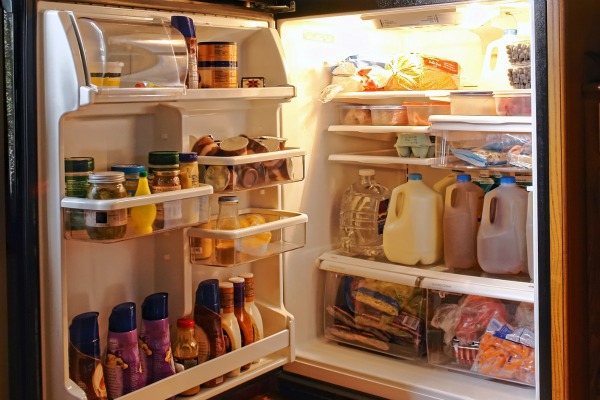Sell-By Labels Send Edible U.S. Food to the Dump (Op-Ed)


Peter Lehner is executive director of the Natural Resources Defense Council (NRDC). This piece is adapted from post which will appear onthe NRDC blog Switchboard. Lehner contributed this article to LiveScience's Expert Voices: Op-Ed & Insights.
No one eats forty percent of the food produced in the United States. That's nearly half of America's food, wasted — not just on plates, but in refrigerators and pantries, in grocery stores and on farms. Much of it perfectly good, edible food — worth $165 billion annually — gets tossed in the trash instead of feeding someone who's hungry.
My colleague, Dana Gunders, has been exploring how, where and why food gets wasted in America, from farm to store to table. One of the more surprising reasons, as she explains in a report released today by NRDC and Harvard Law School, is because of the inconsistent and incoherent way in which food is date labeled.
Those "best-by," "sell-by," and "use-by" dates that you see on food have nothing to do with food safety. They're set by manufacturers, without federal oversight, and most often relate to what manufacturers feel is "peak" quality. The date label on food does not tell you if your food is safe to eat.
Confusion over dates, according to a survey by the Food Marketing Institute, leads 9 out of 10 Americans to needlessly throw away food. For the average family of four, this could translate to several hundred dollars' worth of food being thrown away every year — and in all likelihood, more money spent purchasing the same food again — simply because of a misleading date stamp. A senseless waste, when most Americans are keeping a close eye on household budgets, and when one in six Americans lacks a secure supply of food.
You might think the U.S. Food and Drug Administration (FDA), the federal agency responsible for food safety, would be overseeing food-expiration dates. It does not. The FDA, in its own words, leaves date labels on food, except for infant formula, to "the discretion of the manufacturer." The U.S. Department of Agriculture (USDA), which oversees meat, poultry and some egg products, also says date labels are voluntary. It does call for specific wording on a label, if a manufacturer chooses to use one, such as "packing" date, sell-by date or use-before date. But the agency never defines what those terms mean or how they should be determined. So according to the federal government, a date can be there, or not be there; and if it is there, the manufacturer can decide what it means without any further explanation for consumers. Some state agencies do require date labels for certain products, like dairy items; others, like New York, have no requirements for food dates at all.
As a result of this hodgepodge of rules, the date on your milk might be a use-by date, a sell-by date, or a date with no explanation. If you live in Florida, your milk has to be labeled with a sell-by date, which means — well, nothing, if you're a consumer. The sell-by date is usually a signal to retailers that the product still has shelf-life left, which helps with stock rotation. Once that milk gets home, that date does not ensure that your milk is still good; nor does it say that it's bad. It might be good for a week, or it might have spoiled yesterday because someone left it sitting out on the counter. The date can't tell you that.
Get the world’s most fascinating discoveries delivered straight to your inbox.
The ineffective, misleading date-labeling system in the United States is contributing to the costly problem of wasted food in this country. Wasting food is a systemic problem that's a serious drain on the U.S. economy and natural resources. Americans use 80 percent of our water and half our land for agriculture — and yet we're throwing away nearly half of what we produce with those precious resources. Americans waste four percent of our oil producing, transporting and packaging food that never gets eaten. Food is the single biggest item in our landfills, a source of the powerful global warming pollutant methane.
Overhauling the U.S. date-labeling system is a straightforward, concrete solution that will reduce food waste. The nation needs a reliable, coherent and uniform food-dating system that provides useful guidance to consumers. The words on date labels should have a standard definition across the country and across products. Labels should clearly differentiate between safety-based and quality-based dates. Manufacturers and retailers should have their own, coded system for sharing information relevant to food display and shelf life, rather than a sell-by date that confuses consumers.
The food industry and the federal government can and should start making these changes today.
Have you been flummoxed by a date label recently? Take a picture of the date label on your food and upload it to NRDC's collection at FixFoodDates.com. When you upload your photo, you'll help us get the attention of manufacturers, and also receive expert tips on food storage, as well more information on sorting out the date-label mess. With better laws, more information and smarter business practices, Americans can begin to reduce food waste and make our food system safer and more sustainable.
Lehner's most recent Op-Ed was "Running the A/C? New Building Codes Could Slash Energy Costs." This post is part of the NRDC Wasteland series, featuring people, towns, businesses and industries that are finding innovative ways to cut waste, boost efficiency and save money, time and valuable resources. The views expressed are those of the author and do not necessarily reflect the views of the publisher. This version of the article was originally published on LiveScience.




